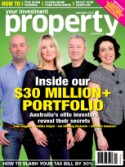 A strong work ethic and dedication to the mortgage world has seen Michelle Coleman amass a property portfolio worth $4.6 million while establishing her
A strong work ethic and dedication to the mortgage world has seen Michelle Coleman amass a property portfolio worth $4.6 million while establishing her Her own decision to consult a broker ended in disaster. “It actually turned out that the broker ripped us off,” she says. “He took a $1,000 application fee that he wasn’t supposed to take and we never got it back. We filled in an application form and, during the process, he kind of fell off the face of the earth and we ended up dealing directly with the lender.”
Her own decision to consult a broker ended in disaster. “It actually turned out that the broker ripped us off,” she says. “He took a $1,000 application fee that he wasn’t supposed to take and we never got it back. We filled in an application form and, during the process, he kind of fell off the face of the earth and we ended up dealing directly with the lender.”Love in the time of mortgages
Now in possession of her ‘real’ first investment property, Michelle had begun working in a new job since returning from Europe.
Michelle’s mortgage broking business is currently undergoing a transformation, which she believes will allow her to help other women, both as clients and colleagues.
